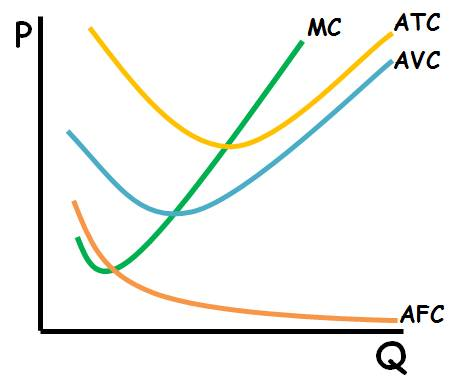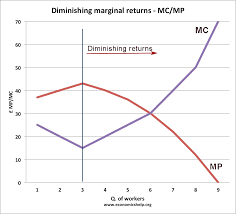Short-run production costs occur when at least one input (e.g., capital) is fixed, while variable inputs (e.g., labor) can be adjusted.
Types of Costs
- Fixed Costs (): Costs that remain constant regardless of output (e.g., rent).
- Variable Costs (): Costs that change as output changes (e.g., wages, raw materials).
- Total Costs (): The sum of fixed and variable costs.
Average Costs
-
Average Fixed Cost (): Fixed cost per unit of output.
-
Average Variable Cost (): Variable cost per unit of output.
-
Average Total Cost (): Total cost per unit of output.
Marginal Cost
Marginal cost is the additional cost of producing one more unit of output. It is essential for all production decisions as firms compare it to revenue to find the profit-maximizing point.
Once again, this is related to 1.6 — Marginal Analysis and Consumer Choice and 1.5 — Cost-Benefit Analysis. We find that the moment marginal cost is equal to marginal revenue, perfectly competitive firms will be at their profit maximization point.
Shapes of Cost Curves
- decreases continuously as output increases.
- and are U-shaped due to diminishing marginal returns.
- initially falls, reaches a minimum, and then rises sharply.
- intersects and at their lowest points.

Relationships Between Costs
- When , is falling.
- When , is rising.
- The same pattern applies to and
